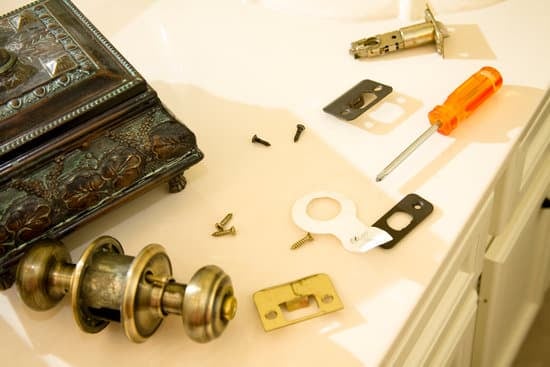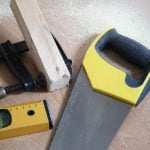Is your older home struggling to keep warm in the winter months? When it comes to how to improve heating in older homes, there are several challenges that homeowners may face. From outdated insulation to inefficient heating systems, older homes often require specific attention to ensure optimal comfort and energy efficiency.
As we delve into this topic, we will explore various strategies for improving the heating in an older home. From assessing the current heating system to upgrading insulation and sealing air leaks, there are several steps that homeowners can take to enhance the warmth and comfort of their older homes.
In this article, we will discuss practical tips for increasing energy efficiency and heat retention in older homes, as well as modern solutions such as radiant floor heating. By understanding the challenges of heating an older home and implementing effective strategies, homeowners can embrace the charm of their historic properties while enjoying improved heating efficiency.
Assessing the Current Heating System
When it comes to improving the heating in an older home, the first step is to assess the current heating system. Older homes often have outdated or inefficient heating systems that struggle to provide adequate warmth, which can lead to discomfort and high energy bills. By identifying the issues and inefficiencies of the existing heating system, homeowners can take targeted steps to improve their home’s heating.
Here are some key areas to consider when assessing the current heating system in an older home:
- Age and condition of the furnace or boiler: A traditional furnace or boiler in an older home may be nearing the end of its lifespan, leading to reduced efficiency and higher energy costs. It’s important to assess the age and condition of these vital components to determine if they need to be replaced with more modern and efficient models.
- Ductwork inspection: In many older homes, ductwork can be poorly designed or deteriorating, leading to heat loss and uneven distribution of warmth. A thorough inspection of the ductwork is essential in identifying any issues that may be impacting the effectiveness of the heating system.
- Energy efficiency rating: Older heating systems typically have lower energy efficiency ratings compared to newer models. Understanding the current energy efficiency level of the heating system can help homeowners make informed decisions about potential upgrades or replacements.
Once these issues and inefficiencies have been identified, homeowners can then begin taking steps to improve their home’s heating by implementing targeted solutions such as upgrading insulation, sealing air leaks, installing a programmable thermostat, or considering alternative heating options like radiant floor heating. By addressing these key areas, homeowners can significantly improve the overall warmth and comfort of their older home while also reducing energy costs.
Upgrading Insulation
When it comes to improving heating in an older home, upgrading insulation is a critical step. Many older homes lack sufficient insulation, leading to energy inefficiencies and heat loss. By taking the time to upgrade your insulation, you can significantly improve the comfort of your home while also reducing your energy bills.
One of the first steps in upgrading insulation is to assess the current state of your home’s insulation. This may involve hiring a professional to conduct an energy audit to identify areas of heat loss and inefficiencies. Common areas for insulation upgrades include the attic, walls, and floors. By addressing these areas, you can help prevent heat from escaping during the winter months and keep your home cooler in the summer.
Another important tip for increasing energy efficiency and heat retention is to choose the right type of insulation for your specific needs. There are various options available, including fiberglass, cellulose, and spray foam insulation. Each type has its own advantages and disadvantages, so it’s important to carefully consider which option is best for your home. Additionally, proper installation is crucial for ensuring that insulation performs as intended, so it may be worth hiring a professional installer for optimal results.
Improving heating in an older home through upgraded insulation not only enhances comfort but also contributes to environmental sustainability by reducing energy consumption. With proper planning and investment in quality materials, homeowners can enjoy long-term benefits from improved energy efficiency and reduced heating costs.
| Insulation Tips | Details |
|---|---|
| Assess Current Insulation | Hire a professional to conduct an energy audit. |
| Choose the Right Type | Consider options like fiberglass, cellulose, or spray foam. |
| Proper Installation | Invest in professional installation for optimal performance. |
Sealing Air Leaks
When it comes to improving heating in older homes, one of the most important steps is to prevent heat loss and drafts by sealing air leaks. Many older homes have a lot of small gaps and cracks that can allow warm air to escape and cold air to enter, making it difficult to maintain a comfortable temperature indoors. By addressing these air leaks, you can significantly improve the efficiency of your heating system and reduce energy costs.
One effective way to identify air leaks is by conducting a thorough inspection of your home, paying close attention to areas such as windows, doors, electrical outlets, plumbing penetrations, and attic hatches. Once you’ve identified these areas, you can use caulking or weatherstripping to seal the leaks and prevent heat loss. Additionally, consider adding insulation to areas where heat is commonly lost, such as attics and crawl spaces.
In addition to sealing air leaks in your home’s structure, it’s also essential to ensure that your heating system itself is properly sealed and insulated. Ductwork should be checked for leaks and properly sealed to prevent warm air from escaping before it reaches the living spaces in your home. By taking these steps, you can create a more comfortable and energy-efficient environment within your older home.
| Area | Action |
|---|---|
| Windows & Doors | Use caulking or weatherstripping |
| Ductwork | Check for leaks and seal if necessary |
| Add insulation |
Installing a Programmable Thermostat
Benefits of Upgrading to a Programmable Thermostat
One of the most effective ways to improve heating efficiency in an older home is by installing a programmable thermostat. These advanced devices allow homeowners to set specific temperatures for different times of the day, ensuring that the heat is used only when needed. This can result in significant energy savings and lower heating bills, making it an attractive option for those looking to upgrade their heating system.
In addition to saving money, a programmable thermostat also offers convenience and flexibility. Instead of manually adjusting the temperature multiple times throughout the day, homeowners can set their desired heating schedule and let the thermostat do the work. This not only creates a more comfortable living environment but also reduces the need for constant monitoring and adjustment of the heating system.
Choosing the Right Programmable Thermostat for Your Home
When considering an upgrade to a programmable thermostat, it’s important to choose the right model for your specific needs. There are various options available on the market, including basic models with simple scheduling features and advanced smart thermostats that can be controlled remotely via smartphone apps.
It’s also essential to consider compatibility with your existing heating system before making a purchase. Some older HVAC systems may require specific types of thermostats, so it’s important to consult with a professional HVAC technician to ensure that you choose a compatible model. By selecting the right programmable thermostat for your home, you can maximize heating efficiency while enjoying the benefits of modern technology.
Installation and Programming Tips
Once you have chosen a programmable thermostat for your older home, proper installation and programming are crucial for maximizing its efficiency. It’s recommended to hire a qualified HVAC technician to install the thermostat and ensure that it integrates seamlessly with your existing heating system.
Additionally, take time to program the thermostat based on your daily schedule and desired temperature settings. By following these tips, you can effectively improve heating efficiency in your older home while embracing modern advancements in HVAC technology.
Overall, upgrading to a programmable thermostat is an effective way to maximize heating efficiency in older homes. With proper installation, programming, and maintenance, homeowners can enjoy improved comfort, energy savings, and reduced environmental impact while preserving the charm of their beloved older homes.
Consideration of Radiant Floor Heating
Radiant floor heating is one of the most effective ways to improve heating in older homes. This modern solution provides even, consistent warmth throughout the home, addressing the challenges often faced with traditional forced-air systems. Here are some key considerations for implementing radiant floor heating in an older home.
Understanding Radiant Floor Heating
Radiant floor heating works by circulating warm water through a network of pipes installed under the flooring. This heat radiates up from the floor, warming the space from the bottom up. Unlike forced-air systems, radiant floor heating eliminates the need for vents and ductwork, making it an ideal choice for older homes with limited space or architectural constraints.
Benefits of Radiant Floor Heating
One of the main benefits of radiant floor heating in older homes is its ability to provide consistent warmth without creating drafts or uneven temperatures. This can be particularly advantageous in homes with high ceilings or rooms that are difficult to heat using traditional methods. Additionally, because radiant floor heating operates at lower temperatures than forced-air systems, it can reduce energy costs and improve overall efficiency.
Installation Considerations
When considering radiant floor heating for an older home, it’s important to work with a qualified professional who has experience retrofitting this type of system. They can assess the existing flooring and subfloor to determine the best approach for installation.
In some cases, certain types of flooring may need to be removed or modified to accommodate the radiant heating components. It’s also important to consider insulation and heat retention within the space to maximize the benefits of radiant floor heating.
By incorporating radiant floor heating into your older home, you can significantly improve heating efficiency while maintaining its unique charm and character. Working with experienced professionals and considering installation factors will ensure that your home remains comfortable and warm throughout the year.
Retrofitting With Energy-Efficient Windows and Doors
As you look for ways to improve the heating in your older home, retrofitting with energy-efficient windows and doors can make a significant difference. Older homes often have windows and doors that are not as effective at retaining heat as modern ones, leading to drafts and heat loss. By upgrading to energy-efficient options, you can improve the insulation and reduce the amount of heat that escapes from your home.
Energy-efficient windows and doors are designed to minimize heat transfer, keeping warm air inside during the winter and hot air outside during the summer. This helps maintain a comfortable temperature in your home while reducing the strain on your heating and cooling systems. Look for windows and doors with a high energy efficiency rating, such as those with double or triple panes, low-emissivity coatings, and insulated frames.
When replacing windows and doors in an older home, it’s essential to ensure proper installation to maximize their effectiveness. Poor installation can lead to gaps and air leaks, negating the benefits of energy-efficient upgrades. Hiring a professional contractor with experience in working on older homes can help ensure that your new windows and doors are installed correctly for optimal heat retention.
In addition to improving heating efficiency, retrofitting with energy-efficient windows and doors can also enhance the overall appearance and value of your older home. With a wide range of styles and designs available, you can choose options that complement the historic charm of your home while reaping the benefits of improved insulation and reduced energy costs.
Regular Maintenance and Tune-Ups
Maintaining and tuning up your heating system is crucial for ensuring its efficiency and prolonged lifespan, especially in older homes. Over time, wear and tear can lead to inefficiencies and even potential breakdowns, costing you more in repairs and replacements. By conducting regular maintenance and tune-ups, you can address issues before they become major problems and improve the overall heating performance of your home.
One of the most important steps in maintaining your heating system is scheduling annual professional inspections. A certified technician can thoroughly examine your system, clean components, check for any potential issues, and make any necessary adjustments or repairs. This proactive approach not only helps to prevent unexpected malfunctions but also ensures that your system operates at peak performance, saving you money on energy bills.
In addition to professional inspections, it’s also essential to perform some routine maintenance tasks yourself. This includes regularly changing air filters to ensure proper airflow and efficiency, as well as keeping vents and ducts clear of debris. By taking these simple steps, you can help your heating system run smoothly and minimize the risk of malfunctions.
Lastly, don’t underestimate the importance of scheduling regular tune-ups for your heating system. These tune-ups involve adjusting components, calibrating controls, and optimizing settings for maximum efficiency. By staying on top of maintenance and tune-ups for your heating system, you can significantly improve its performance in an older home while avoiding costly repairs or premature replacement.
Final Thoughts
In conclusion, improving the heating in an older home can be a challenging but ultimately rewarding endeavor. Despite the unique obstacles that come with heating an older home, there are various strategies and upgrades that homeowners can implement to enhance heating efficiency while preserving the charm of their historic properties.
By carefully assessing the current heating system and identifying issues and inefficiencies, homeowners can gain a better understanding of where improvements are needed. Upgrading insulation and sealing air leaks are essential steps in preventing heat loss and maintaining a comfortable indoor environment. Additionally, installing a programmable thermostat and considering radiant floor heating can further maximize heating efficiency in older homes.
Furthermore, retrofitting with energy-efficient windows and doors, along with regular maintenance and tune-ups of the heating system, can significantly improve heat retention and extend the overall lifespan of the system. It is important for homeowners to embrace the unique character of their older homes while also making necessary improvements to ensure adequate heating.
With patience, careful planning, and the right upgrades, it is possible to achieve both warmth and charm in older homes. Taking the time to assess, plan, and execute these improvements will result in a more comfortable living space for years to come.
Frequently Asked Questions
How Can I Make My Old House Warmer?
Making your old house warmer can be achieved by improving insulation, sealing drafts, upgrading windows and doors, and installing a more efficient heating system. Additionally, using heavy curtains and rugs can help retain heat.
What Is the Best Heating Solution for Old Houses?
The best heating solution for old houses depends on various factors such as the size of the house, existing heating infrastructure, and budget. However, options like radiant floor heating, high-efficiency boilers, or ductless mini-split systems are popular choices for older homes.
Why Is My Old House Not Getting Warm?
An old house may not be getting warm due to poor insulation, drafty windows and doors, an outdated or inefficient heating system, or even inadequate maintenance of the existing heating equipment. It’s important to address these issues to improve warmth and comfort in the home.

I’m thrilled to have you here as a part of the Remodeling Top community. This is where my journey as an architect and remodeling enthusiast intersects with your passion for transforming houses into dream homes.





